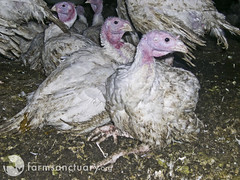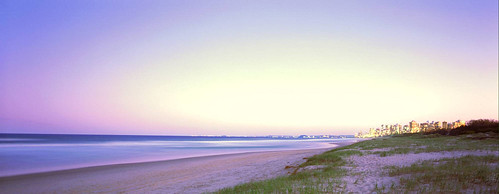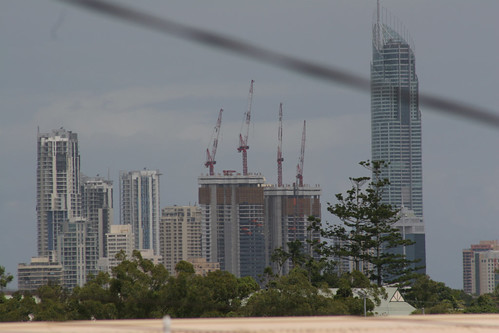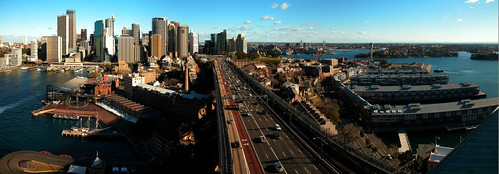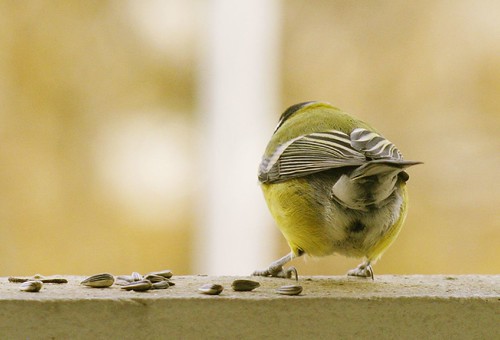Understanding living things can be hard. Sometimes things that don't appear to be living can be.
summary
In this post I will argue why we should consider large bureaucracy and corporation as actually living things. They are not actually made of the same stuff that we are familiar with living things being made of, but they are none the less alive. I think its important to understand these creatures, grasp how they perceive the world and perhaps then we can begin understand their cognition.
introduction
I have often argued that people are unable to comprehend what they can't see. We build a variety of tools to enable us to see into things which are beyond our ability for observation in part to allow us to see and understand more.
Microscopes are a good example of this principle.
Before we were able to observe the microscopic we had no idea what were bacteria or how much of what modern medicine is built upon worked or that it even existed.
In my blog I occasionally make reference to a concept that I call "
The Machine". In this article I will attempt to explain what this concept is. The Machine is not just a mechanism, The Machine is actually a kind of living organism but one which certainly not entirely organic and transcends a couple of layers of conceptuality. This is what makes the concept difficult to grasp and for many it will seem just some sort of
fancy.
So what is a living thing? Seems at first like an easy task to identify that which is living and that which is not. I would like to venture a definition; I think that anything which can:
- make an observable change on the world
- reproduce
- make a decision
- die
is a living thing. Seems pretty obvious, but perhaps many will struggle against this definition set when I apply it in a moment.
How often have you heard some politician or company director or person employed in some role in a company, say
"I didn't want to do it, but I had no other choice in my role"
Quite often I'm sure.
People have struggled for as long as we have written records (and probably longer) to understand what is it that makes a person or an animal alive. The various sciences have grappled with the question and we have uncovered many things about the nature of the bodies of living things to expand our understandings. While we understand much about biology, biochemistry, anatomy and even the electro-chemistry of nerves we just don't know why people are alive or why they die.
In this essay I would like to turn the question around, instead of looking at us I'd like to look at things outside of us, things we can't see but yet like the common cold know exists. We often call them
systems.
Lets start with a system called Government.
Once upon a time in history we were manged in less complex groups and had a person who was our leader. We might call this person a King. Eventually the area of power under the control of a King grew too large and he called upon others to administer his authority for him.
This can become so large as to overwhelm the King and others in the system that the King has created. Eventually those who the King gave power to realise that they command more power than the King. So when something occurs to give them reason they can challenge his authority and even wrest power from the King.
Since I'm Australian and since Australian government derives its existence from the English government I thought I'd examine the this history (
not because its special in any particular way).
In 1215 members of the King of Englands system Barons rebelled against him and forced him to sign the
Magna Carta. This essentially took power from him and imposed a codified system of written ideas called laws.
These laws removed his power to act in any way that he wished and imposed upon him punishments (
punishments upon the King!) if he resisted these laws.
a committee of 25 barons who could at any time meet and overrule the will of the King if he defied the provisions of the Charter, seizing his castles and possessions if it was considered necessary(wikipedia).
So for the first time in English history the King, the person who ruled the land according to his will, was subjugated to rules written on paper.
I would guess at this point that some are saying:
But these are just rules, just writing, they are not living, they are not something which can constitute as a living thing.
This is true, they are just a set of rules. But then so too are all the chemical reactions which define how our bodies work. These rules of chemistry and physics can also be used and manipulated to effect us and our thinking. Anti depressant drugs are a good example of this.
Lets consider a system with some very simple rules. Imagine a checker board for a game, but one which only has white squares. The rules of our game are simple,
- if a checker exists on our board then that square is "alive" and if no checker is on a square then that is "dead"
- Any live square with fewer than two live neighbours dies, as if caused by under-population.
- Any live square with two or three live neighbours lives on to the next generation.
- Any live square with more than three live neighbours dies, as if by overcrowding.
- Any dead square with exactly three live neighbours becomes a live square.
This is essentially the rules of the game called
Life by John Conway. It seems very simple, just a set of rules or laws governing what happens to the checkers. It also defines a method of spawning new life and a circumstance where death occurs.

Yet from this simplicity of rules comes something which if we represent it as it moves through time we see something amazing. Sometimes things seem to be alive, like the walker represented here to the left.
The graphic at left is an example of stepping though these rules and showing how this "
thing" moves across the board in a simple movement behavior. Sure, its not living, perhaps its not even real ... but then when you look at the biochemistry of just one part of your body (say
insulin production) that doesn't look alive either.
The same set of rules with enough pieces to act upon can make amazing things. For example:
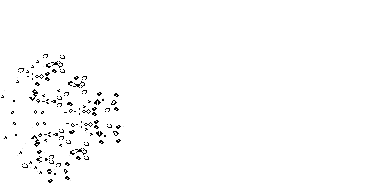
this combination of rules and its effect on the pieces creates a system which is self perpetuating and grows forever.

So is this a machine? Well classically we call things made of metal that use energy and go round and round machines. Stuff like this classical representation of a 4 stroke engine. It used to be harder to think of a machine as being something just composed of rules.
It is in fact exactly that when you look at it from an engineering or scientific perspective. The engine is a collection of the rules of thermodynamics, chemistry and physics.
By applying these rules (collecting things together in the correct manner) we can create a machine.
Since the advent of computers it becomes perhaps easier to understand that a system can in fact be just a collection of rules, after all programing languages are actually just descriptions of what to do and what decisions to make.
Clearly computer programs require computers to operate them and equally our government system requires humans to execute the instructions and do the tasks.
So people have become the base hardware for the machine which we run and execute.
If this sounds like something out of the matrix, or something out of fiction which could not be possible; ask yourself this question:
Can you imagine a person doing something that that don't want to do but have to do it because its their job and that they are compelled to do this by law?
so what about reproduction?
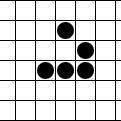
Well consider that the English Government started colonies in Australia, when on 13 May, 1787, the First Fleet of 11 ships set sail for Botany Bay. They intended to establish a colony. That would require governance and that governance was clearly going to be modeled on that of England. The English government had successfully spawned a child. This child then became children with the creation of additional colonies of New South Wales, Victoria and so on.
Eventually some years later these colonies consider unification and the creation of a new governing body; the Federal Government was spawned in 1901.
When it comes to rules for the system to have complex morphology have a look at the list of legislations below, each one of them being far more complex in nature than the simple 5 rules which defined the operation of the "Life" simulation above.
If Government is a living thing then clearly Government is a very complex living thing.
It is not however only Governments which can be considered as living things. Companies too (
especially under corporate law) are legal entities; they hold property, employ people, and make decisions.
So it would seem that we already have in our midst an organism which lives, yet does not breath and can not be easily touched.
It shapes our lives and controls us in ways which expand with the rules which it creates.
If you doubt this then consider
this article in a UK news paper where a child is accused of being racist by calling a boy ‘broccoli head’ and another was said to be homophobic for telling a teacher ‘
this work is gay’. The article goes on to mention:
Schools are forced to report the language to education authorities, which keep a register of incidents.
and that
In total, 34,000 nursery, primary and secondary pupils were effectively classed as bigots because of anti-bullying rules.
The school can keep the pupil’s name and ‘crime’ on file. The record can be passed from primaries to secondaries or when a pupil moves between schools.
And if schools are asked for a pupil reference by a future employer or a university, the record could be used as the basis for it, meaning the pettiest of incidents has the potential to blight a child for life.
This does not sound like the sort of reaction a human would have on how to treat their kids but yet this is the reaction that the machine has for sorting us out.
What about
this?
Arthur Mills, a fellow of the Royal Australasian College of Dental Surgeons, is accused of causing serious burns to the faces of two patients and superficial burns to another after a drill he was using overheated.
At least one of the incidents was referred to the Dental Council, which upheld the complaint about the burning.
It makes these findings in only 2 per cent of cases but still recorded no reprimands on his registration. He practises with no warning to the public.
It sounds more like a system protecting its component parts rather than something designed to look after humans.
I believe that there are far more examples and comparisons I could make to support my argument that Government and Corporations are actually living things, but rather than do that I'll leave you with a couple questions.
How do you negociate with such a machine?
Will it listen to you?
and can it be directed by human will?
holding the system responsible or even punishment of the system
If we decide that we don't like the party in control of government and we vote them out, does that change the machinery of government or just put it on a different PC?
As it stands at the moment we have very little understanding of this life form. We as yet are perhaps uncertain that it is a living thing, but make no mistake this thing can control our lives, alter the environment and exert influence.
The simple rule based system above called 'life' created stuff not so much different to observing bacteria growth, look again at the list of rules below which form our Acts of Law in Australia and tell me that does not form the basis for even more complex interactions. Combined with the execution on the human computing platform I think its almost certain we have something alive here.
*List of Australian Commonwealth acts (
and don't forget the State legislations either!):
* 1901 - Acts Interpretation Act 1901 (No 2 of 1901)
* 1901 - Customs Act 1901 (No 6 of 1901)
* 1901 - Excise Act 1901 (No 9 of 1901)
* 1901 - Pacific Island Labourers Act (No 16 of 1901)
* 1901 - Immigration Restriction Act 1901 (No 17 of 1901)
* 1902 - Commonwealth Franchise Act 1902 (No 8 of 1902)
* 1903 - Judiciary Act 1903 (No 6 of 1903)
* 1903 - Defence Act 1903 (No 20 of 1903)
* 1904 - Conciliation and Arbitration Act 1904 (No 13 of 1904)
* 1906 - Designs Act 1906 (No 4 of 1906)
* 1908 - Quarantine Act 1908 (No 3 of 1908)
* 1914 - Crimes Act 1914 (No 12 of 1914)
* 1918 - Commonwealth Electoral Act 1918 (No 27 of 1918)
* 1928 - Transport Workers Act 1928 (No 37 of 1928)
* 1938 - Passports Act 1938 (No 15 of 1938)
* 1942 - Statute of Westminster Adoption Act 1942 (No 56 of 1942)
* 1948 - Australian Citizenship Act 1948 (No 83 of 1948)
* 1958 - Migration Act 1958 (No 62 of 1958)
* 1959 - Banking Act 1959 (No 6 of 1959)
* 1960 - National Measurements Act 1960 (137 of 2008) [1]
* 1961 - Marriage Act 1961 (No 12 of 1961)
* 1968 - Copyright Act 1968 (No 63 of 1968)
* 1973 - Insurance Act 1973 (No 76 of 1973)
* 1973 - Seas and Submerged Lands Act 1973 (No 161 of 1973)
* 1974 - Trade Practices Act 1974 (No 51 of 1974)
* 1975 - Racial Discrimination Act 1975 (No 52 of 1975)
* 1975 - Family Law Act 1975 (No 53 of 1975)
* 1976 - Federal Court of Australia Act 1976 (No 156 of 1976)
* 1976 - Aboriginal Land Rights Act 1976 (No 191 of 1976)
* 1980 - Crimes (Taxation Offences) Act 1980 (No 156 of 1980)
* 1982 - Freedom of Information Act 1982 (No 3 of 1982)
* 1982 - Taxation (Unpaid Company Tax) Assessment Act 1982 (No. 119 of 1982)
* 1984 - Sex Discrimination Act 1984 (No 4 of 1984)
* 1986 - Income Tax Act 1986 (No 108 of 1986)
* 1986 - Human Rights and Equal Opportunity Commission Act 1986 (No 125 of 1986)
* 1986 - Australia Act 1986 (No 142 of 1986)
* 1988 - Extradition Act 1988 (No 4 of 1988)
* 1988 - Financial Transaction Reports Act 1988 (No 64 of 1988)
* 1988 - Australian Capital Territory (Self-Government) Act 1988 (No 106 of 1988)
* 1988 - Privacy Act 1988 (No 119 of 1988)
* 1988 - Higher Education Funding Act 1988 (No 2 of 1989)
* 1989 - Lands Acquisition Act 1989 (No 15 of 1989)
* 1990 - Patents Act 1990 (No 83 of 1990)
* 1991 - Social Security Act 1991 (No 46 of 1991)
* 1992 - Disability Discrimination Act 1992 (No 135 of 1992)
* 1992 - Radiocommunications Act 1992 (No 174 of 1992)
* 1993 - Native Title Act 1993 (No 110 of 1993)
* 1996 - Workplace Relations Act 1996 (No 60 of 1996)
* 1997 - Telecommunications Act 1997 (No 47 of 1997)
* 1997 - Euthanasia Laws Act 1997 (No 17 of 1997)
* 1998 - Charter of Budget Honesty Act 1998 (No 22 of 1998)
* 1998 - Native Title Amendment Act 1998 (No 97 of 1998)
* 1999 - Federal Magistrates Act 1999 (No 193 of 1999)
* 2001 - Corporations Act 2001 (No 50 of 2001)
* 2001 - Intelligence Services Act 2001 (No 152 of 2001)
* 2003 - Intelligence Services Amendment Act 2004 (No 57 of 2004)
* 2004 - Corporate Law Economic Reform Program Act 2004 (No 103 of 2004)
* 2004 - Australian anti-terrorism legislation, 2004, incorporating:
o 2004 - Anti-terrorism Act 2004 (No 104 of 2004)
o 2004 - Anti-terrorism Act (No 2) 2004 (No 124 of 2004)
o 2004 - Anti-terrorism Act (No 3) 2004 (No 125 of 2004)
* 2005 - Anti-Terrorism Act 2005 (No 127 of 2005)
* 2005 - Repealed Workplace Relations Amendment (Work Choices) Act 2005 (No 153 of 2005) - (Repealed by Parliament, 2008).
* 2009 - Fair Work Act 2009 (28 of 2009) [2] (Passed as Replacement to repealed Act No 153 of 2005)



 Yet from this simplicity of rules comes something which if we represent it as it moves through time we see something amazing. Sometimes things seem to be alive, like the walker represented here to the left.
Yet from this simplicity of rules comes something which if we represent it as it moves through time we see something amazing. Sometimes things seem to be alive, like the walker represented here to the left.
 So is this a machine? Well classically we call things made of metal that use energy and go round and round machines. Stuff like this classical representation of a 4 stroke engine. It used to be harder to think of a machine as being something just composed of rules.
So is this a machine? Well classically we call things made of metal that use energy and go round and round machines. Stuff like this classical representation of a 4 stroke engine. It used to be harder to think of a machine as being something just composed of rules. Well consider that the English Government started colonies in Australia, when on 13 May, 1787, the First Fleet of 11 ships set sail for Botany Bay. They intended to establish a colony. That would require governance and that governance was clearly going to be modeled on that of England. The English government had successfully spawned a child. This child then became children with the creation of additional colonies of New South Wales, Victoria and so on.
Well consider that the English Government started colonies in Australia, when on 13 May, 1787, the First Fleet of 11 ships set sail for Botany Bay. They intended to establish a colony. That would require governance and that governance was clearly going to be modeled on that of England. The English government had successfully spawned a child. This child then became children with the creation of additional colonies of New South Wales, Victoria and so on.

